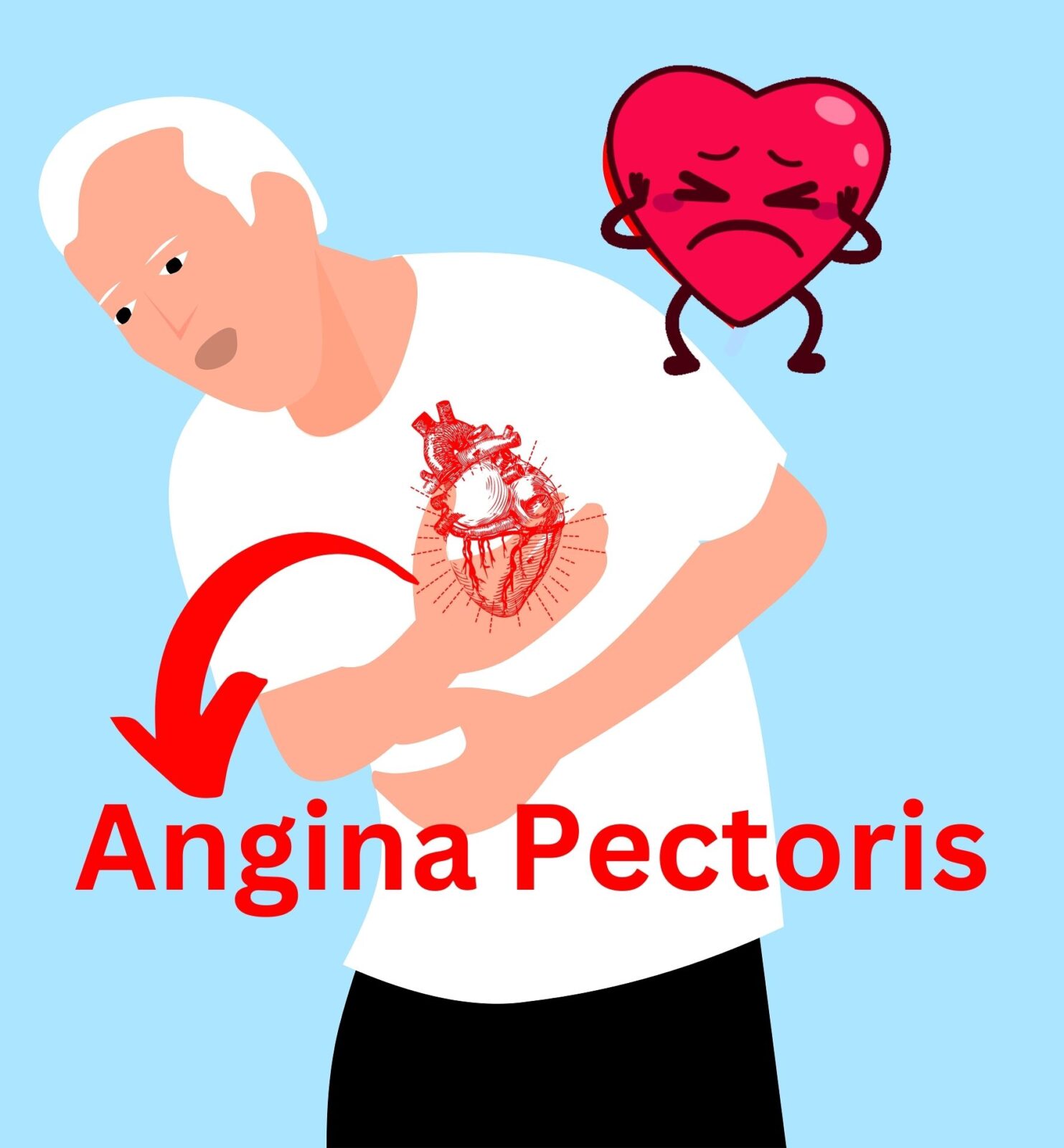- Angina pectoris is a condition that causes chest pain or discomfort in the chest. It happens when heart muscle doesn’t receive enough blood and oxygen.
- Angina is caused due to coronary artery disease, which is the narrowing or blockage of the blood vessels that supply blood and oxygen to the heart.
- The term “angina” comes from the Latin word “strangling” because people with this condition feel tight or squeezing in their chest.
Symptoms of Angina Pectoris
- Feeling of tightness, pressure, or squeezing in the chest.
- Shortness of breath.
- Nausea, dizziness, or sweating.
- Feel tired or fatigued.
- Irregular or rapid heartbeat.
- Feel anxious or uneasy.
- *It’s important not all patients feel chest pain or discomfort with Angina Pectoris. Some people may only experience shortness of breath or other symptoms. In some cases, patients may experience “silent” Angina, which has no symptoms at all.
Causes of Angina Pectoris
- Coronary Artery Disease (CAD): The most common cause of angina is CAD, where fatty deposits (plaques) build up inside the arteries, making them narrowed or blocked.
- Blood Clots: Sometimes, blood clots can form within the narrowed arteries, further obstructing blood flow and causing angina.
- High Cholesterol and Blood Pressure: contribute to plaque buildup in the arteries, making them less flexible and reducing blood flow.
- Atherosclerosis: This condition makes the arteries stiff and narrow, affecting the blood flow to the heart.
- Hypertrophic cardiomyopathy: In this condition, the heart muscle becomes abnormally thick.
- Coronary Artery Spasm: sudden constriction of the coronary arteries, which can cause angina pectoris.
- Anemia: Anemia is a condition in, which the body does not have enough red blood cells to carry oxygen to the tissues and heart muscle.
- Aortic stenosis: Aortic stenosis is the narrowing of the aortic valve of heart, which can lead to reduced blood flow to the heart muscle.
- Other causes – Stress, Smoking, diabetes, Obesity, strenuous physical activity, and sedentary lifestyle raise the risk of angina and other heart-related problems.
- **It’s essential to seek medical attention if you experience chest pain or any symptoms of angina.
Diagnosed and Medical Test for Angina Pectoris
- Electrocardiogram (ECG)
- Coronary Angiography
- Blood tests
- Echocardiogram
- Medical History
- Physical Examination
- Stress Test
Types of angina pectoris
Here are types of angina pectoris :
-
- Stable Angina: This is the most common type. It happens when your heart works harder, like during exercise.
It causes chest pain or discomfort, but the pain is predictable and usually goes away with rest or medication. - Unstable Angina: This type is more serious. The chest pain is sudden and unpredictable, often occurring at rest or with minimal exertion.
- Stable Angina: This is the most common type. It happens when your heart works harder, like during exercise.
It can last longer and is not always relieved by rest or medicine. It’s a sign that you need immediate medical attention.
Treatment option for Angina Pectoris
- Nitroglycerin medication: This medicine helps to relax and widen the blood vessels, improving blood flow to the heart and reducing chest pain.
- Beta-blockers medication: These drugs reduce the workload on the heart by slowing down the heart rate and decreasing blood pressure.
- Calcium channel blockers: They relax the blood vessels and improve blood flow to the heart, reducing chest pain episodes.
- Ranolazine: This medication helps in managing chronic angina by reducing the frequency and intensity of chest pain.
- Coronary Artery Bypass Grafting (CABG): For extensive blockages, CABG surgery may be recommended.
- Angioplasty and Stenting: In more severe cases, angioplasty with stent placement may be required.
- Percutaneous coronary intervention (PCI): In this procedure a balloon catheter to open narrowed or blocked coronary arteries and restore blood flow to the heart.
- NOTE- Always consult your doctor to determine the best treatment plan for your specific condition. Don’t take any medicine or treatment without consulting A Doctor or Cardiologist. Early diagnosis and appropriate management can significantly improve your quality of life.
- In the emergency call to Ambulance or Doctor near you.
Commonly questions asked Angina Pectoris patients:-
-
- Question: What causes Angina Pectoris?
Answer: Angina is caused by reduced blood flow to the heart muscle due to the narrowing of coronary arteries. - Question: How can I differentiate between Angina and a heart attack?
Answer: Angina and heart attacks have similar symptoms, such as chest pain or discomfort. However, angina pain is typically treated with rest or medication, while heart attack pain is more persistent and severe. - Question: What triggers Angina episodes?
Answer: Physical exertion, emotional stress, extreme temperatures, heavy meals, and smoking. - Question: What lifestyle changes help manage Angina?
Answer: Adopting a heart-healthy diet, quitting smoking, exercising regularly, managing stress, and maintaining a healthy weight reduce Angina symptoms. - Question: Can Angina cured?
Answer: effectively managed through lifestyle changes, medications, and sometimes, medical procedures like angioplasty. - Question: What medications are commonly prescribed for Angina?
Answer: Medications for Angina may include nitroglycerin, beta-blockers, and calcium channel blockers. - Question: When should I seek emergency medical attention for Angina?
Answer: If you experience or feel any symptoms, seek emergency medical help immediately. - Question: What is the ICD 10 code for Angina Pectoris?
Answer: ICD-10 code for stable angina (120.0) and unstable angina (120.9).
- Question: What causes Angina Pectoris?
